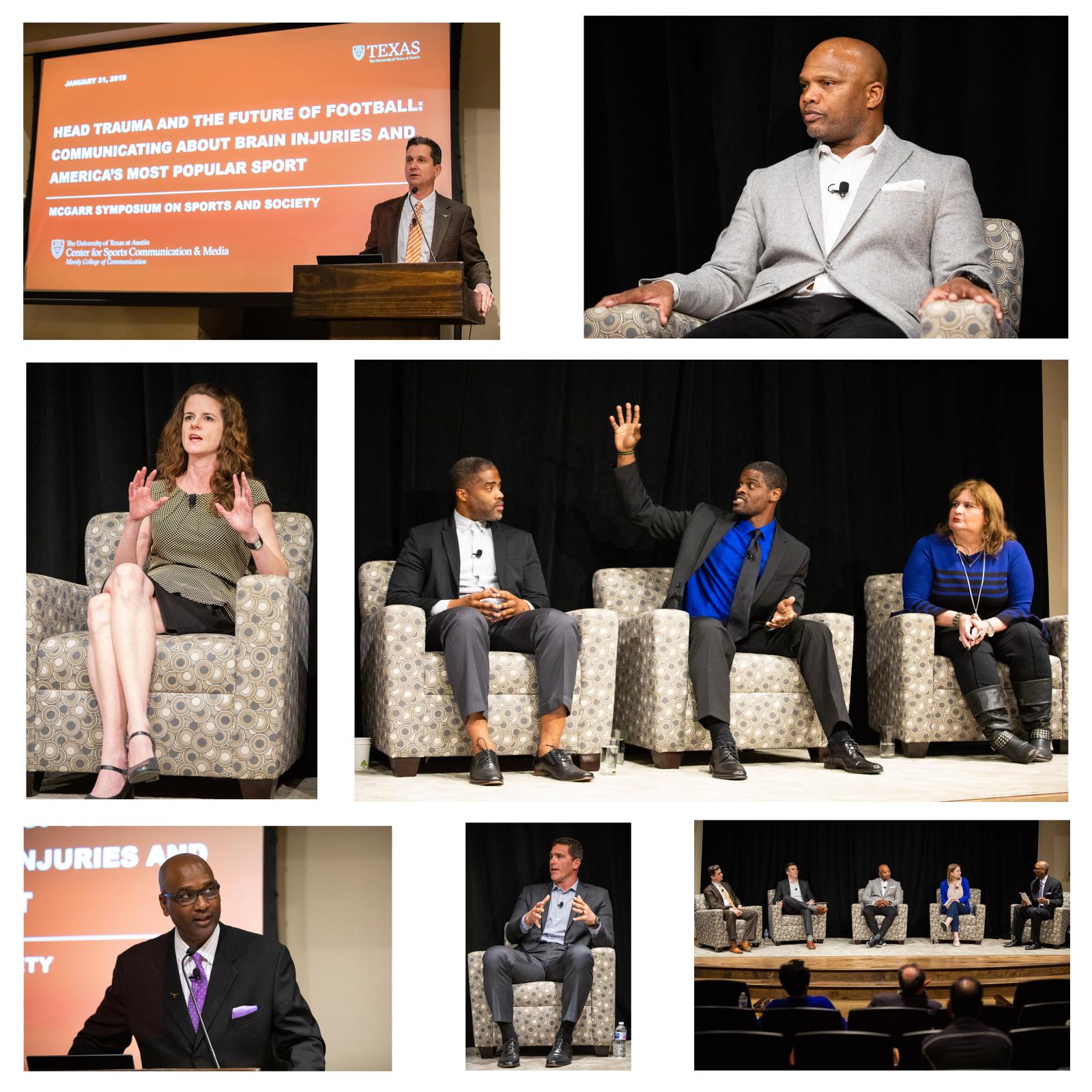2019 McGarr Symposium on Sports and Society: Communicating about Brain Injuries and America's Most Popular Sport
12:30 to 4:30 pm, January 31, at the AT&T Conference Center auditorium
Organized by Lance Blanks and Dr. Michael Butterworth

In the United States, football has long been the most popular sport among fans. The National Football League (NFL) is the most successful league in American professional sports and Division I college football continues to grow. In communities across the country (and certainly across the state of Texas), football remains a cultural touchstone and a defining component of local identities. Beyond its symbolic capital, there are a range of benefits one might derive from the sport, including the opportunity to develop confidence, leadership, and teamwork skills. In short, it is all but impossible to imagine life in the United States without football.
Over the past decade, several public challenges have led to questions about the future of football. Perhaps most relevant is the discussion in the medical community about the long- term impact of head injuries to players. Especially with research from Dr. Bennet Omalu in 2005 that first linked concussive injuries—chronic traumatic encephalopathy (CTE)—to football, observers representing the sport, medical professions, media, academia, and elsewhere have taken an interest in various forms of traumatic brain injury (TBI). The popular and scholarly literature on these issues has exploded. Omalu’s story has been chronicled in the book and documentary, League of Denial, as well as in the Hollywood dramatization, Concussion. In more recent years, physicians such as Anne McKee and Joseph Jankovic have led new research efforts to understand and treat head trauma. In 2017, McKee published findings that showed that 87% of the brains of 202 deceased football players had evidence of CTE. She has since also made a breakthrough in being able to diagnose CTE for a patient who is still alive. In short, research is advancing quickly and the debate continues about the long-term risks of playing football.
The Center for Sports Communication & Media's McGarr Symposium on Sports and Society provided a platform for a meaningful discussion of football, its effects on the human brain, and the symbolic importance of the sport in American life. Given football’s popularity and its significance to individual and community identities, how might it be possible to reconcile the sport’s strengths with growing concerns about head trauma? In other words, can we fashion a future for football that preserves the hallmarks of the sport while also attending to legitimate health concerns? This forum facilitated realistic conversations about the sport and its future in light of growing medical evidence.
Participants for Head Trauma and the Future of Football
Kathleen Bachynski, Ph.D., post-doctoral fellow at NYU Langone Health
Christian Campbell, Advocate for Change in Sports Media
Tyler Campbell, Advocate for Change in Sports Media
Daniel A. Grano, Ph.D., professor of communication at the University of North Carolina Charlotte
Suzanne Halliburton, reporter at the Austin American-Statesman
Allen Hardin, P.T., M.S.P.T (among other credentials), Associate Athletics Director for Performance, Health & Wellness at The University of Texas at Austin
Maya Henry, Ph.D. assistant professor of communication sciences and disorders at The University of Texas at Austin
Patrick Hruby, journalist and CSCM Fellow
Eric Metcalf, former player for The University of Texas at Austin and in the National Football League (12 years)
Michael Rosenthal, head football coach for Austin High School and former player in the National Football League (9 years)
Paul Schulz, M.D., neurologist with UT Physicians Neurocognitive Disorders Center

Symposium schedule
12:30-12:50: Welcome and Introductory Remarks (Michael Butterworth and Lance Blanks)
12:50-1:50: Session I: Understanding the Symbolic Place of Football in the United States—Christian Campbell, Tyler Campbell, Daniel Grano and Suzanne Halliburton
1:50-2:00: Break
2:00-3:00: Session 2: Communicating about Player Safety and Head Trauma—Maya Henry, Allen Hardin, Mike Rosenthal, and Paul Schulz
3:00-3:10: Break
3:10-4:10: Session 3: Envisioning the Future of Football—Kathleen Bachynski, Patrick Hruby, and Eric Metcalf
4:10-4:30: Wrap-up



